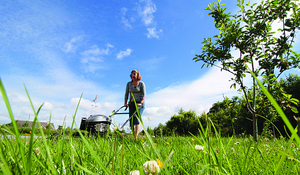Search Results for 'Nasal spray'
7 results found.
HAY FEVER AND MICRO-IMMUNOTHERAPY (A NEW AND NATURAL APPROACH)

Hay fever (acute seasonal allergic rhinitis) is the most common type of allergy. Symptoms include itchy red eyes also known as allergic conjunctivitis, watery discharge from the nose and eyes, sneezing, fatigue, headache and nervous irritability. It can mimic the symptoms of common cold and affects 30% of the population worldwide. Post nasal drip of mucus can lead to a cough, and nose bleed in severe cases. Tree and grass pollen is the usual cause of hay fever in spring and summer-time but perennial allergic rhinitis can be caused by some or all of the following: animal hair, dust, feathers, fungus, spores and moulds the symptoms of which can stay with you in any part of the year. Some of us are born to be allergic from birth it occurs in both males and females and anywhere in the world, hay fever is not contagious.
It’s time to tell hayfever to get stuffed
The longer evenings, better weather, and the emerging colourful displays of flowerbeds is a welcome change to some after the dark and gloomy winter, but for hayfever sufferers it means a battle with bouts of sneezing, a congested nose, and runny eyes. Desperate sufferers go to great lengths for relief, but herbal remedy provider A Vogel shows how nature can offer relief to its own problem.
Control your hayfever
Atishoo! Atishoo! Your eyes are streaming, your nose is running and you are constantly reaching for tissues.
Ease that sneeze
Sneezing, runny/blocked nose, red, watery, itchy eyes and an itchy throat. If you are currently under seige from these symptoms then you may be one of the 15 per cent of people who suffers from the summertime misery known as hayfever.
Sneeze no more
If you suffer from hayfever - the most common allergic disease in Ireland - and are looking for a natural treatment check out Allerclear, a herbal remedy which costs less than €10.
Getting to grips with summer sneezes
It is the most common allergic disease in Ireland, affects one in 10 people and is most prevalent between May and September.


